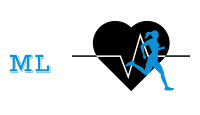Thirty percent of human population has a high blood pressure and everyone has a 90% risk to acquire it during the rest of the life. As a result, half of all human deaths are due to the major complications of high blood pressure, mainly stroke and heart attack. Aways check with your online doctor Ontario the lab results for your cholesterol and sugar.
Medical scientists are fighting this life-threatening disease and they have gained some success. That is the development of several classes of antihypertensive drugs and definition of “normal” levels of blood pressure that should be maintained to reduce the risk of cardiovascular complications and death.
Is it a great success? Unfortunately not. Pharmaceutical treatment can not reverse the disease. The patient with developed arterial hypertension can only hope to reduce the risk of high blood pressure complications. How big is this risk reduction? Relative risk reduction is less than 25% during 2-5 years for all major cardiovascular complications. It is higher for stroke (36-45%) and less for heart attacks (10-15%). When all risks are combined, the relative risk reduction is close to 25%.
Be careful and distinguish absolute and relative risk reductions. Papers and pharmaceutical ads always present relative risk reduction which is more impressive. They even do not mention that it is “relative”. That is because the absolute risk reduction could be as much as 0.2-2.0%. Does not impress you, right? Let’s take a clinical trial where 0.6% and 0.96% of patients had had fatal stroke in the treatment group and placebo group accordingly. Absolute risk reduction will be 0.96% – 0.60% = 0.36%, however relative risk reduction will be as much as (0.96% – 0.6%)/0.96% = 37.5%! Looks much better! Absolute risk reduction 0.36% means that from one thousand patients taking medication during 3-5 years, three or four could be saved from fatal stroke. Clinical trials don’t say what will happen with those saved patients after 5 years. Presumably, the risk is postponed towards after 5 years period. Clinical trials also do not say which particular patients will be saved. It is like lottery, it could happen that 4 saved patients is just a difference between 44 saved and 40 preliminary died due to pharmaceutical side effects. Vioxx, Celebrex, Baycol are the known examples.
As you see everyone has to pay for this risk reduction not only by inconvenience and cost of pharmaceuticals, but also by the risk of unpleasant or life-threatening side effects. For the patients with high estimated risk (more than 10% during 5 years or more than 20% during 10 years) this price is considered to be a worth-while to pay.
Estimated risk is calculated by doctor. Taking the patient’s age and blood pressure level, plus the presence of risk factors, such as smoking, diabetes, high cholesterol, obesity, atherosclerosis and renal dysfunction, doctor can say that the risk for the cardiovascular complications of high blood pressure during 5, 10 or 20 years will be certain amount of chances For example, smoking woman, aged below 65, with abdominal obesity (waist more than 102cm) and blood pressure 140-179/90-109 mm Hg will have 15-20% absolute risk of all cardiovascular events at 10 years. Just add one more risk factor (diabetes or high cholesterol) and the risk goes up to 30%. This is high risk and the treatment is definitely required.
For the patients with initial stages of hypertension and low risk the balance between benefits and drawbacks of antihypertensive drugs is not established. There are three reasons for being reluctant to start taking antihypertensive drugs without having 10% estimated risk of cardiovascular complications.
Reason one: absolute risk reduction from, let’s say, 7 % to 5 % does not look sufficient to justify long-term expensive, unsafe and inconvenient treatment.
Reason two: even if we decide to operate the relative instead of absolute risk reduction, we CAN NOT do this, because available clinical trials have demonstrated risk reduction for the high risk patients and can not be extrapolated to the low risk patients. Clinical trials on low risk patients were not performed and we do not know if the harm of the treatment overbalances the benefit.
Reason three: negative side effects of antihypertensives are well known and includes lipid, hormonal disturbances including development of diabetes. We know that for the high risk patients (read – low life expectancy) the danger from the drug treatment is less than the benefit, but we do not know and we can not know without 20-30 years studies if it is the case for the low risk patients.
That is why official guidelines do not recommend starting drug treatment at the early stage of hypertension. Modern pharmaceutical treatment can not prevent or reverse the disease; it needs to be taken for life-long to maintain blood pressure at the recommended level.
What about non-pharmaceutical treatment?
The treatment guidelines include the following non-pharmaceutical recommendations.
1. Stop smoking
2. Reduce body weight
3. Aerobic physical exercise of 30-40 min, at least 3-4 days per week
4. More fruits, vegetables and potassium, and less sodium
5. Alcohol intake not more than 20-30 g of “pure alcohol” per day (it corresponds to 150-200 ml of wine or a pint of beer)
6. Reduce stress
These non-pharmaceutical approaches have a proven efficacy in the reduction and prevention of high blood pressure. But they require substantial perseverance and will-power to comply with.
You should know how much effort is required to follow dietary restrictions or to stop smoking recommendations. Low compliance with these recommendations is usually accompanied by low compliance with drug therapy.
For people who want to be healthy and prevent or at least control this dangerous disease, there is a good news. Non-pharmaceutical recommendations really work; you will definitely reduce your risk by following them.
But people want more. People want the treatment that can effectively reverse the disease. The way to success here is in the proper coping with stresses. Stress causes activation of sympathetic system. Chronic activation of sympathetic system causes hypertension and obesity. Four out of six classes of antihypertensive drugs are designed to act upon sympathetic system.
Can we manage stress and accompanied sympathetic activation without drugs? The task is not easy. You may say that effective stress reduction is only possible after radical change of working or family environment. I may add that even after that, the man will be caught by the new stress. The problem is in people’s attitude and the ability to cope with stress and to avoid chronic anger. Those who are able, live more than hundred years. The researches on centenarians have demonstrated their unique ability to avoid damaging reactions on the stressful situations.
To select most effective stress-management technique for yourself, I recommend you to try first those having proven blood pressure reducing effect, like yoga, meditation and computerized devices reducing respiration rate. Coping with stress is the obvious way to escape from Number One Killer and to live the full life span we are designed for.
Summary
Five secrets you should know about pharmaceutical and non-pharmaceutical treatment of the high blood pressure:
1. Pharmaceutical treatment should be initiated if estimated risk of cardiovascular complications is greater that 10% during 5 years or greater than 20% during 10 years.
2. The real benefit of the treatment is described by the absolute risk reduction which very often is not disclosed.
3. Side effects of the antihypertensive drugs during long-term consumption are common and serious.
4. Non-pharmaceutical treatments of hypertension really work. Although they require much more effort and will-power to implement in compare with daily chemical drugs consumption, they will protect you not only against hypertension, but also against the high cholesterol, diabetes, cancer, obesity and other diseases. Plus you will get better and healthier life, with much more energy and satisfaction.
5. We must learn from centenarians how to escape diseases. Centenarians have innate ability to cope with stress; they are natural stress-shedders. They are not preoccupied with worry, hostility and anxiety. They avoid unhealthy thinking, like anger, sadness, guilt and fear. It is possible to develop such personality with modern stress-management and personal development techniques.
Article Source: http://EzineArticles.com/44650

